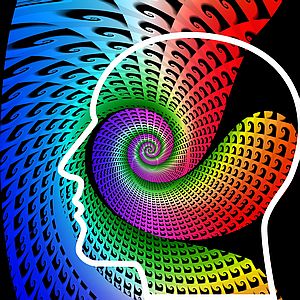Sorry, this entry is only available in Deutsch.
Year: 2022
(Deutsch) Workshop Lernmotivation
Sorry, this entry is only available in Deutsch.
Short Portrait

(Deutsch) Workshops
Sorry, this entry is only available in Deutsch.
(Deutsch) Vorträge
Sorry, this entry is only available in Deutsch.
Motivation to Study: 24 Tips for Teachers
Motivation to Study: 24 Tips for Higher Education
The students in your lectures and seminars maybe bored, lethargic or have no motivation following your teaching? Do you experience this sometimes?
You will find 24 tips for reflecting your academic teaching. These tips are derived from my recent research projects and grounded on the Integrated Model of Learning and Action (ILMA).
Academic Motivation: The Start (IMLA: Motivation Phase)
In the beginning, students need to realize what to expect. You can initialize the learning internalization process by providing in-depth information about the learning topic. The students can then establish a first learning orientation for themselves. They should become aware about their own strengths and weaknesses. The main emphasis should be on the learning process (and not the learning content). Teaching should always promote self-development and self-transformation. Other prerequisites for encouraging academic motivation are free choices, such as selecting a learning topic. This promotes the perceived autonomy and subsequently increases the acceptance of responsibility. This is the starting point for an increased motivation for learning.
,
The Learning Intention (ILMA)
Each student learns best in a specific way. And this way maybe very different from the teacher’s learning approach. Support your students in finding new learning methods and learning strategies. Encourage them actively to explore, experience and evaluate new learning methods.
,
The Implementation of Learning Actions (IMLA: Volition Phase)
The implementation of the learning process can be very different for each student. Create safe learning spaces which can be used for individual learning processes.
,
Motivation over Time: Feedback Loops (IMLA)
In order to keep the learning processes motivated and effective over time students should regularly reflect on their learning progress and their self-transformation. Therefore, provide your students with feedback on their individual learning progress.
.

This work is licensed uner Attribution-NonCommercial-ShareAlike 4.0 International
Image by wagrati_photo from Pixabay
Motivated Learning
Motivated learning
First of all, one might wonder if motivated learning is necessary at all. Is is not possible to learn without motivation? At least as far as short-term learning success is concerned, this question must be answered positively: it is possible to successfully learn without motivation. However, the empirical results from our “Zeitlast” (workload) studies also show that such a learning outcome without motivation is usually accompanied by a greater perceived effort and a higher objective time requirement. It may also be assumed that the acquired knowledge content is less accessible – in particular, that the transfer to new situations is disrupted resulting in some inertia of the knowledge thus acquired.
Conversely, it can be inferred that motivated learning requires less personal effort, is more time-effective and the resulting knowledge is more universally applicable.
These advantages of motivated learning are directly related to the fact that intrinsic motivation is linked to the self-system “extension memory” already described in the blogpost 1 “Descartes’ Error“. The right hemispheric extension memory accompanies and enables the internalization processes necessary to perform a learning task with intrinsic motivation.
Here, the extension memory has a threefold function:
- It allows feeling the fit between learning tasks and the learner and thus creating a first internalization of the learning task. Subsequently, an ascription of responsibility for the learning task can be developed.
- The extension memory also accompanies the experience of self-efficacy. In particular, whether a particular learning method or learning strategy really suits you.
- In the actual performing of the learning action, the extension memory will assess whether I continue to feel comfortable with the concrete learning processes.
The activation of the extension memory in the learning process is thus the prerequisite for a holistic association of the self with all phases of the learning process. A large correspondence between the self and the learning regulation will trigger the effects of an intrinsic motivation:
- Learning is easy and time flies by (flow experience).
- Through a high degree of associations with the self-system many methods can be associated that can be used flexibly during the learning process.
- A close connection with the self-system also enables a better self-motivation, which allows a constructive handling of setbacks and, if necessary, guarantees a longer study of the subject matter.
- Finally, strong associations of the acquired knowledge with the self-system result in a more flexible retrieval of the knowledge content in different situations and thus promotes a high retention performance.
The next blog post will explain how a learning environment can be designed in such a way that the highest possible intrinsic motivation for learning can emerge (motivated design).
.

This work is licensed uner Attribution-NonCommercial-ShareAlike 4.0 International


